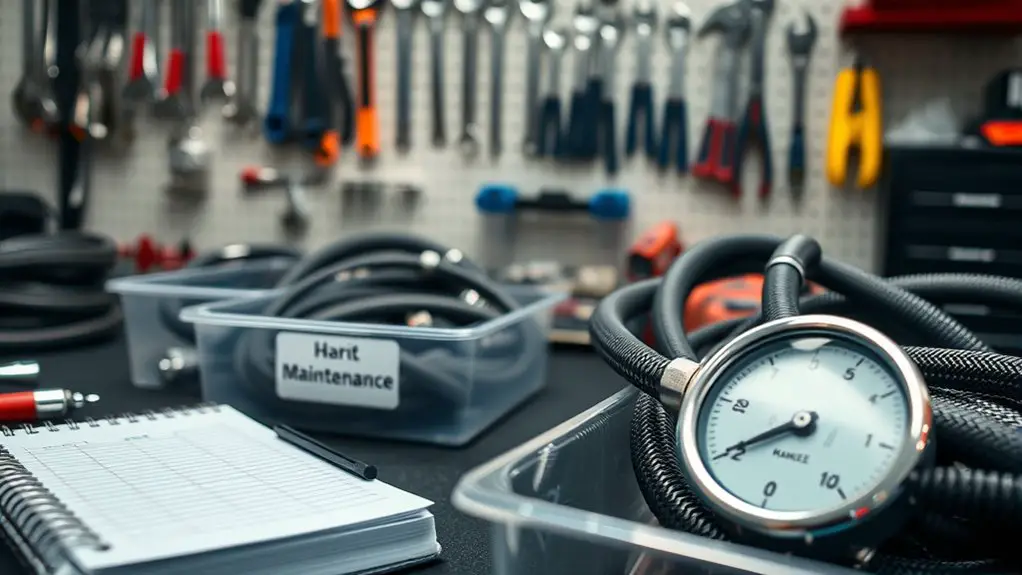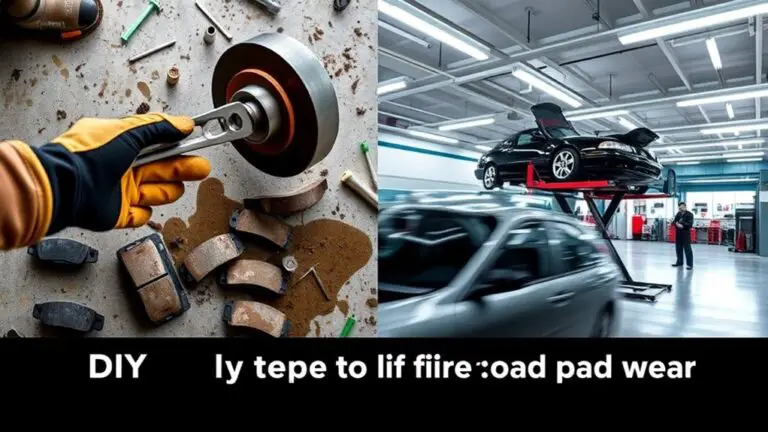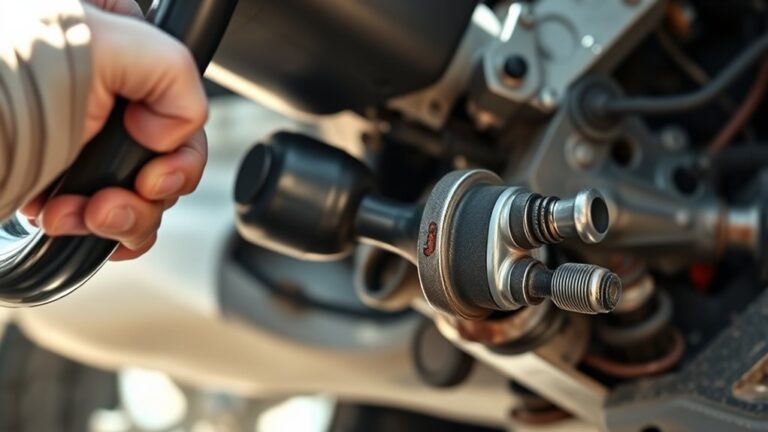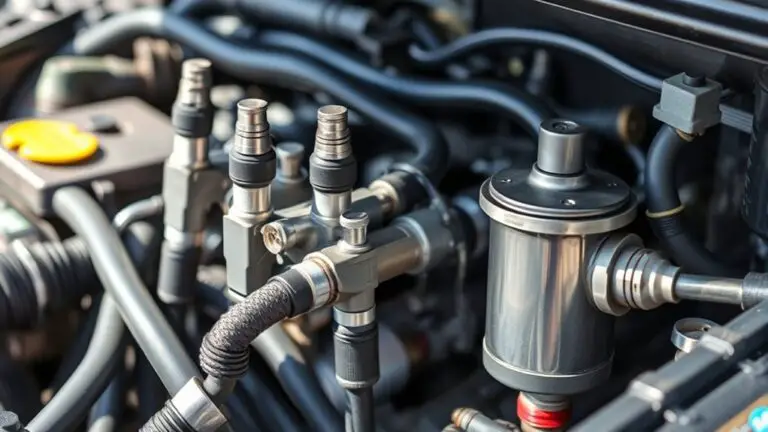How to Keep Records to Avoid Costly Aging Hoses Later
Keep precise hose records so you catch wear early, schedule timely replacements, and prevent costly aging failures. Start a centralized system that tags hose type, size, pressure, installation dates, and batch codes. Log leaks, temperature, and usage cycles, plus every inspection and replacement. Use a consistent naming scheme and review cadence to catch discrepancies fast. Set automated reminders for replacements based on service life and environment, and keep both digital and paper backups. If you keep this up, you’ll reveal more actionable steps.
Why Keeping Hose Records Saves Money
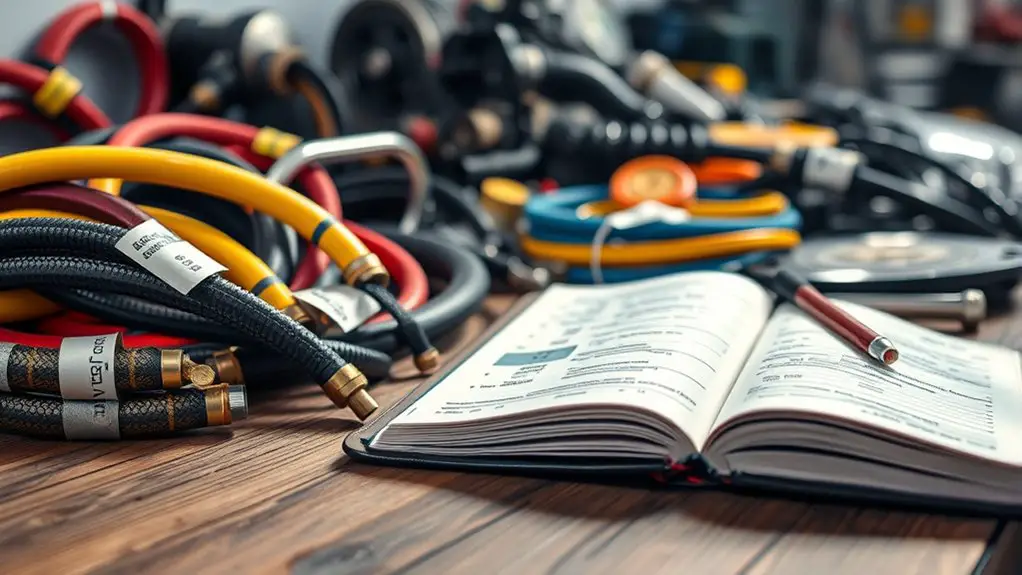
Keeping records of hoses helps you spot wear and replacement needs before failures strike, which saves money on emergency fixes and downtime. When you log dates, mileage, and observed symptoms, you create a clear trail for cost analysis. You’ll see patterns: moisture, cracks, or stiffening often preview failure cycles, letting you schedule proactive swaps instead of reacting to crises. This foresight trims spare parts waste and reduces rushed vendor charges during outages. A focused record system also sharpens your maintenance budget, since you can forecast lifetime costs, compare pricing, and plan bulk orders for commonly used hoses and fittings. You gain leverage in negotiations by showing reliable usage data and replacement intervals. By treating records as a living tool, you empower your team to maintain performance, minimize interruptions, and preserve operational freedom. The payoff is a leaner, more predictable spend that supports steady uptime and trusted workflows.
Key Data to Log for Hoses
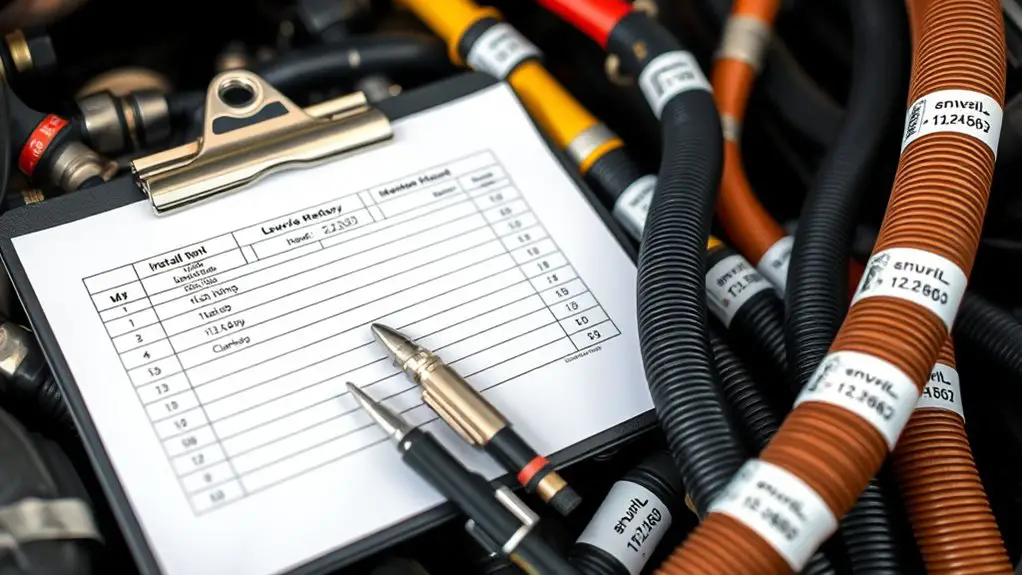
Now that you’ve seen how hose records save money, you’ll want a clear list of what to capture. Start with basic identifiers: hose type, size, and default operating pressure. Record dates you install or replace hoses, plus batch or serial numbers for traceability. Track hose performance indicators: leakage incidents, maximum observed pressure, and any degradation in flexibility or color. Note maintenance intervals and actions taken, including inspections, cleanings, and replaced couplings or clamps. Include environmental context: conveyed fluid, temperature ranges, and daily run time or cycle counts. Capture failure modes with dates and root-cause notes to prevent recurrence. Document storage conditions and location, so you know where every hose lives and when it should be moved or retired. Maintain a simple scoring or rating for condition and readiness. Finally, log reviewer or technician initials to confirm accuracy. This data empowers proactive maintenance and supports freedom from surprise downtime.
How to Organize Your Hose Records
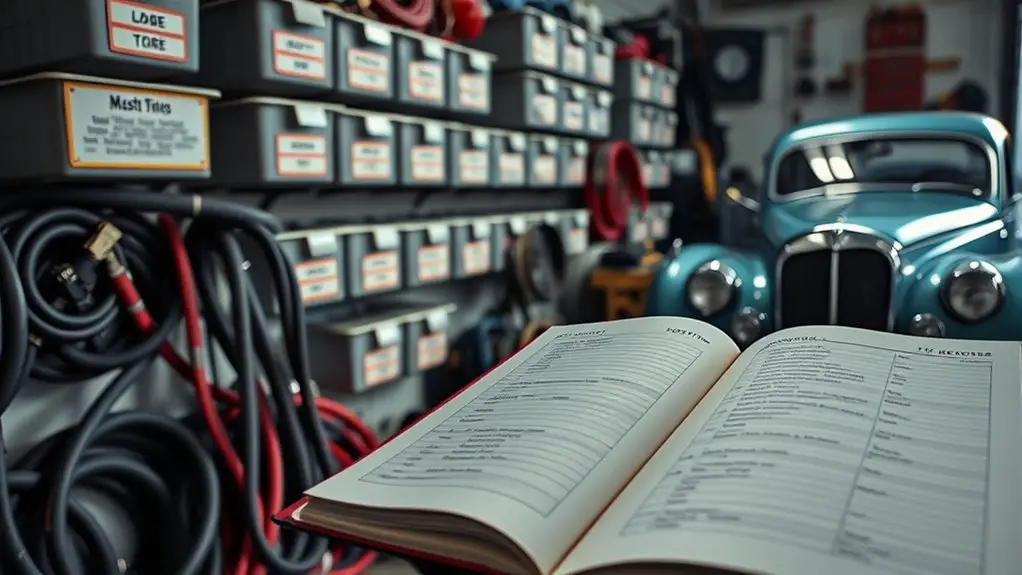
Start by setting up a simple, centralized record system you can trust. You’ll keep hose inventory accurate, accessible, and actionable through streamlined record management. Organize by hose type, length, and condition, then tag entries with purchase date and last inspection. Use a consistent naming convention so you can find every hose in seconds, not hours. Maintain digital backups and a compact paper log for field checks. Schedule regular audits and reconcile discrepancies immediately, so your records stay reliable.
| Hose Type | Length | Condition |
|---|---|---|
| Garden | 50 ft | Good |
| Booster | 100 ft | Fair |
| Soaker | 25 ft | Excellent |
This table anchors clarity: quick scans reveal what you have, what’s due for service, and what must be replaced. With disciplined hose inventory, you control costs, reduce downtime, and protect your freedom to work on what matters. Your record management becomes your strongest preventive measure.
Setting Up a Replacement Schedule
To set up a replacement schedule, start by aligning replacement timelines with hose type, length, and criticality to your operations. You’ll define clear intervals so you know when to replace, not just when you notice a failure. Build a simple matrix that shows each hose’s service life, expected duty, and environmental stress. Then set replacement frequency for each category, balancing cost, risk, and downtime. Use your records to trigger maintenance reminders well in advance, not at the last minute. Tie reminders to calendar dates, serial numbers, and last inspection data so nothing slips through the cracks. Keep it actionable: assign ownership for each hose group, and document the decision criteria for decommission. Maintain flexibility for changes in workload or supplier lead times. Regularly review the schedule against actual performance, updating deadlines as needed. The result is predictable uptime, lower risk, and more freedom to focus on core operations.
Inspecting Hoses: What to Look For
Regular inspections are essential, so you can catch wear before it sparks a failure. You’ll scan hoses for common signs, focusing on hose wear and damage indicators that threaten reliability. Look for cracks, splits, blisters, or softened spots along the outer cover, and check all clamps and fittings for looseness or corrosion. Feel for stiffness or flattening where the hose shouldn’t deform, and test flexibility at bends to catch hardening. Inspect for surface abrasion from nearby components, plus oil or chemical stains that signal seepage. Prioritize areas near fittings, ends, and supports, where movement concentrates stress. Document every finding with a quick note and timestamp so your records reflect actual condition.
- Visual and tactile checks for cracks, blisters, and hard spots
- Fittings, clamps, and coupling integrity with leakage signs
- Environmental exposure, chemical staining, and wear progression over time
Choosing Replacement Materials and Fittings
When choosing replacement materials, prioritize compatibility with your hose system to prevent leaks and failures. Consider both material compatibility and fitting longevity to guarantee durable performance over time. This sets the foundation for reliable records and proactive maintenance.
Material Compatibility
Choosing replacement materials and fittings starts with compatibility: you must match the hose’s chemical resistance, temperature range, and pressure ratings to the new components so they perform reliably and last. You evaluate material properties upfront, not after failure, to avoid surprises in service life. This is where compatibility testing becomes your ally, confirming that seals, elastomers, and metals interact safely under real conditions. Prioritize mixed service goals, such as abrasion resistance and chemical exposure, and document the results for your records. Clear specs shorten troubleshooting when replacements are needed. Stay proactive: test in representative environments, note deviations, and align supplier data with field data for ongoing reliability.
- Assess chemical and temperature limits before ordering
- Verify seals and fittings tolerate anticipated pressures
- Document test results for future reference
Fitting Longevity
Fitting longevity hinges on selecting materials and connections that survive the service environment long before they show signs of wear. You’ll choose fittings that resist corrosion, vibration, and temperature swings, prioritizing compatibility with hoses and ports. Favor modular, standardized components to ease future replacements and minimize downtime. Document batch numbers, pressure ratings, and installation dates to support accurate maintenance cycles. Pair materials with proper lubricants and torque specs to prevent seizing or leaks. Regularly review performance data and replace suspect pieces before failure.
| Benefit | Action |
|---|---|
| Reliability | Verify ratings and material compatibility |
| Maintenance ease | Use standardized, modular fittings |
| Longevity tracking | Log fit, fit type, and replacement intervals |
Storing and Handling Hoses to Extend Life
Storing and handling hoses properly can extend their life and keep performance steady; start by drying and cleaning them after use to prevent moisture and debris from causing corrosion or wear. When you store, coil neatly without kinks, and keep pressure off the sleeves to avoid deforming the core. Use wall hooks or reels to minimize bending stress, and label each hose with its purpose and last maintenance date for quick checks.
Storing hoses properly extends life; dry, coil neatly, and label with purpose and last maintenance date.
- Choose a cool, shaded area and avoid direct sun to protect material from UV breakdown
- Hang or rack hoses off the ground to prevent abrasion and pest exposure
- Regularly inspect for cracks, bulges, or stiff spots and log findings for hose maintenance and storage techniques
Implementing a Quick Audit and Update Routine
Set up a Quick Audit Checklist you can run in minutes, and map it to your Update Cadence Plan so records stay current. It should be practical to execute: verify key data points, flag discrepancies, and note needed actions for each hose. Use this routine to drive steady improvements and keep aging hoses reliably documented.
Quick Audit Checklist
A quick audit and update routine keeps aging hoses reliable and safe. You’ll establish a simple, repeatable process that fits your workflow, focusing on clear outcomes and fast decisions. Your checks should center on audit frequency and record formats to stay consistent and actionable. Keep it practical: verify hose condition, note replacements, and confirm documentation is current. Use concise entries that anyone can read at a glance, then store data where you can retrieve it quickly.
- Define audit frequency per hose type and environment for predictable cycles
- Use standardized record formats to guarantee uniform understanding across teams
- Capture key indicators (fit, wear, leaks) with timestamped, actionable notes
Update Cadence Plan
To implement an efficient quick audit and update routine, establish a clear cadence that aligns with hose type, environment, and risk. You’ll set a rhythm that fits reality, not a label on a policy. Schedule short, focused checks—monthly for high-risk hoses, quarterly for moderate ones, and annually for low-risk lines. During each cycle, capture essential data: condition notes, performance flags, reminders, and action owners. Maintain record retention by updating logs immediately after inspections, and archive older records with a simple, searchable tag. Build a lean documentation strategy: concise entries, standardized fields, and a brief summary of decisions. This cadence supports freedom through transparency, accountability, and continuous improvement, while preventing surprises and costly failures.
Frequently Asked Questions
How Often Should I Review Hose Records for Accuracy?
You should review hose records quarterly to keep data accuracy high. A consistent record frequency helps you spot drift, missing details, or aging indicators before problems escalate. Set a calendar reminder and log updates every four months, not just after incidents. Proactively compare current measurements with baseline specs, flag anomalies, and correct them promptly. This approach keeps you in control, supports informed decisions, and preserves your freedom to act confidently whenever you need reliable information.
Can Hose Data Affect Warranty Claims or Rebates?
Yes, hose data can affect warranty claims and rebates. You should prepare clear documentation to support warranty verification and expedite the claim process. Track installation dates, part numbers, service events, and failures so you can prove eligibility quickly. When discrepancies arise, you’ll navigate coverage confidently and avoid delays. Stay proactive: keep records organized, accurate, and accessible, so your warranty verification strengthens your claim process and protects your freedom to rely on quality gear.
What Indicators Trigger an Immediate Hose Replacement?
Immediate indicators for hose replacement are visible wear, cracks, bulges, leaks, and persistent stiffness. When you notice hose wear accelerating or any leakage after a simple flex, trigger replacement timing now. Don’t delay for warranty nerding—act decisively. Inspect clamps and fittings too, replacing if corrosion or looseness is present. Track your observations to avoid downstream failures. You’ll stay safe, save costs, and keep your system flowing smoothly with proactive replacements.
Do Records Include Incident Photos of Damaged Hoses?
Yes—you should include incident photos of damaged hoses in your records. They provide visual context for incident documentation and support a clear damage assessment. Snap images from multiple angles, timestamp them, and link each photo to the corresponding incident entry. This proactive practice helps you track wear trends, justify replacements, and plan preventative steps. You’ll feel freer knowing your records back up decisions with concrete evidence and actionable next steps.
How Can Records Help Forecast Costly Repairs?
You can forecast costly repairs by analyzing trends in wear, failure intervals, and repair costs. Use cost analysis to quantify risk and prioritize fixes, then align maintenance scheduling to anticipated needs. Track hose ages, usage, and incident notes to detect patterns early. With this data, you’ll act proactively, budgeting accurately and reducing downtime. Your records empower smarter decisions, helping you stay ahead of failures while preserving freedom to operate confidently.

